Manchester United vs Liverpool has long been one of the standout fixtures in the English football calendar, and this Sunday will see the 207th competitive meeting between these two fierce rivals. United have stolen a march on Liverpool this season, sitting 13 points ahead in second place, which is quite a reversal from last season, when Liverpool finished as champions, and 33 points in front of their Manchester rival. While United have more or less sewn up second place, they will still be desperate for a win over Liverpool, as much as for bragging rights as to extend the title race to another weekend, as Manchester City’s win over Crystal Palace means that a United defeat will crown them as champions with three games to play. Liverpool, on the other hand, need the three points to make up ground on their rivals for a top four spot, and the games are running out for Jurgen Klopp’s men to be able to sneak into the Champions League for next season.
This piece is a tactical preview of this heavyweight clash, with both teams’ expected lineups, tactics and strategies discussed, as well as their potential weaknesses which could be exploited by either team.
Expected lineups
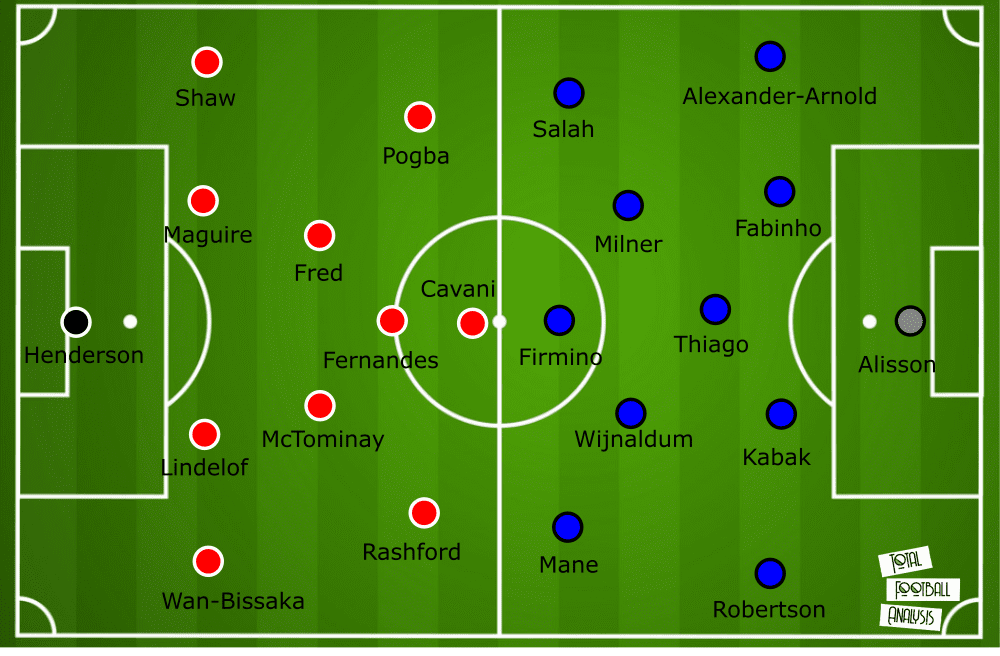
Ole Gunnar Solskjær reported that United did not have any fresh injury concerns after their thumping 6-2 win over AS Roma in the first leg of their Europa League semi-final, so we expect the Red Devils’ lineup to be the same as in that match, with the exception of the goalkeeper, where Dean Henderson will take over from David de Gea. The back four selects itself, even with Eric Bailly available for selection, while Fred and Scott McTominay have been the preferred duo in midfield for the big games this season. The only area of contention is on the flanks, where Marcus Rashford has been carrying an injury for months, but has been an integral part of United’s lineup, and a game against Liverpool seems like too big an occasion to rest the 23-year-old. Paul Pogba has been in superb form since being moved out to the left flank, while Edinson Cavani was devastating in the second half against Roma, and will hope to continue in that vein against a slightly shaky Liverpool defence. Mason Greenwood could potentially come into the side if Rashford does get rested, but we expect him to come off the bench in this game.
Jurgen Klopp has also reported a clean bill of health, other than his long-term absentees, while it looks like Nathaniel Phillips will miss this game through injury as well, having sat out of Liverpool’s previous two games. Thus, Fabinho will have to drop in at centre-back once again to partner Ozan Kabak, and while the Brazilian has been assured whenever asked to play there, this does take away some security from Liverpool’s midfield. Given Jordan Henderson’s continued absence, we expect that James Milner will come into the XI, alongside Thiago and Gini Wijnaldum, while Liverpool’s usual front three should start. Diogo Jota will drop to the bench to accommodate the extra midfielder.
United’s build-up and Liverpool’s press
While Liverpool are not pressing anywhere near as intensely as they did over the last few seasons, they are still one of the best teams in Europe at setting pressing traps and winning the ball high up the pitch to create attacking opportunities. This was most recently seen in the second leg of their Champions League quarter-final against Real Madrid – Liverpool pressed quite high and did so in a very effective manner, being able to prevent the away side from building up from the back, and creating some dangerous opportunities which they ultimately failed to capitalize on.
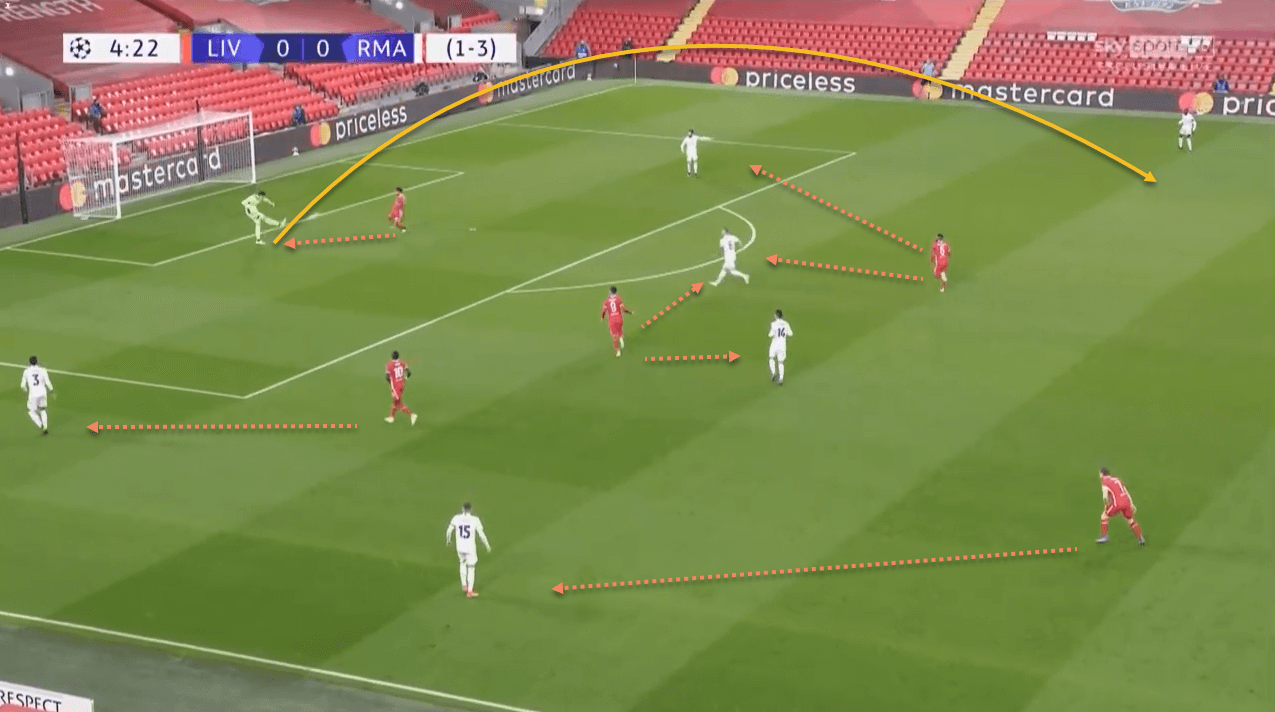
Here, the ball has been played back to Thibaut Courtois, who is forced into a kick out to the flank with his weaker foot, since Mohamed Salah is closing him down and also cutting out the pass to Nacho, the left-sided centre-back. Also note the positioning of the other Liverpool players, who are all close enough to press Madrid players if they receive the ball.
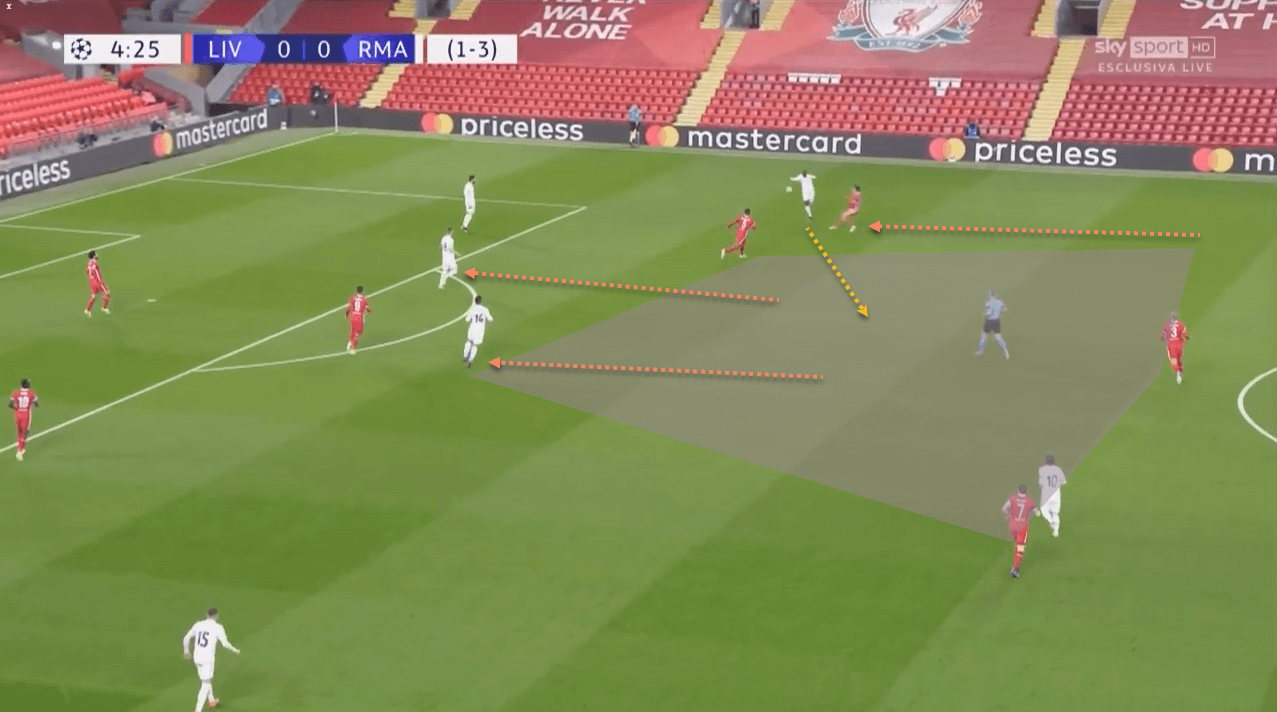
Ferland Mendy is then pressed aggressively by Trent Alexander-Arnold here, who has stormed up the pitch, and he wins the ball and is able to send a dangerous cross into the box. Mendy did fail to control the ball, but even if he did, there are no passing options infield, since both Kroos and Casemiro have been dragged too deep by Liverpool’s press and the need to try and offer passing options. This is another consequence of Liverpool’s press which also allows them to win the ball high up the pitch on multiple occasions.
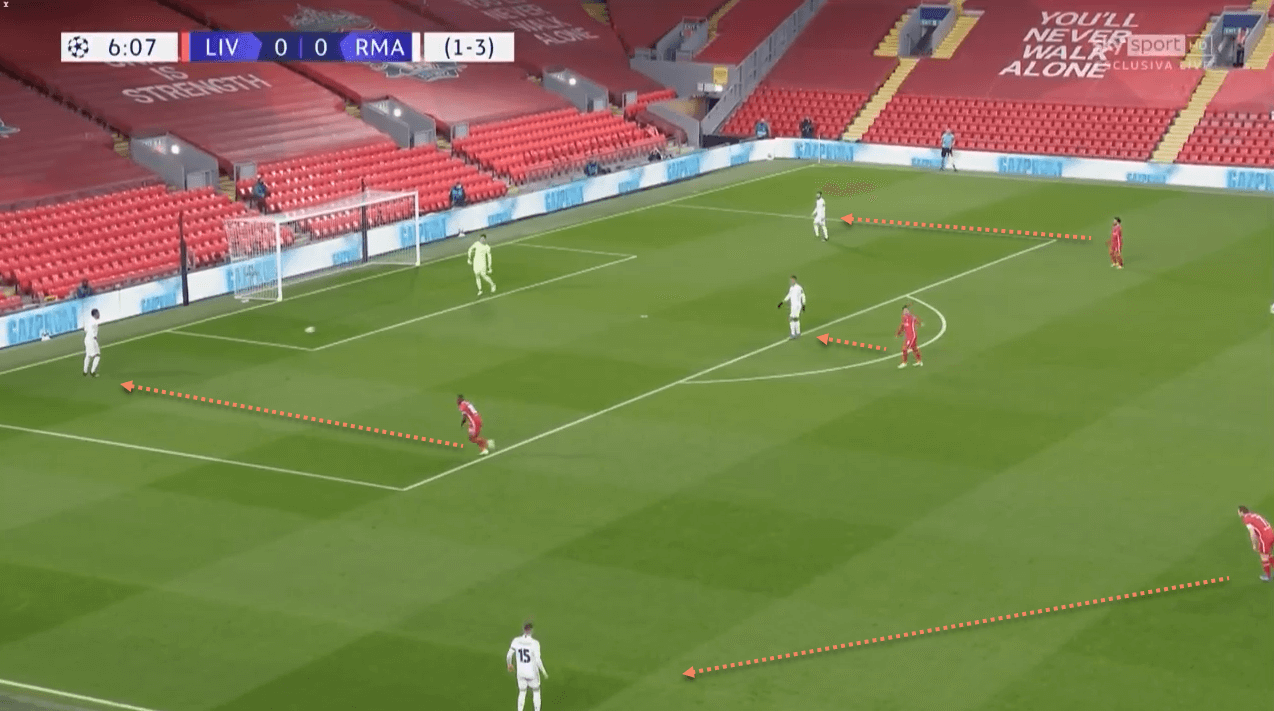
Another example from early on in the same match. Madrid played with a 1-2 in midfield i.e. Casemiro was the deepest midfielder, while Toni Kroos and Luka Modrić played ahead of him, so the Brazilian drops in to offer a passing option, but he is being marked by his compatriot Roberto Firmino. The centre-backs have split to the sides of the box, and upon Courtois’ pass to Éder Militão, Sadio Mané immediately charges forward to press him. Notice Firmino here – he is gesturing to Milner to stay alert to press Federico Valverde, Madrid’s stand-in right-back, in case the ball is played out to him.
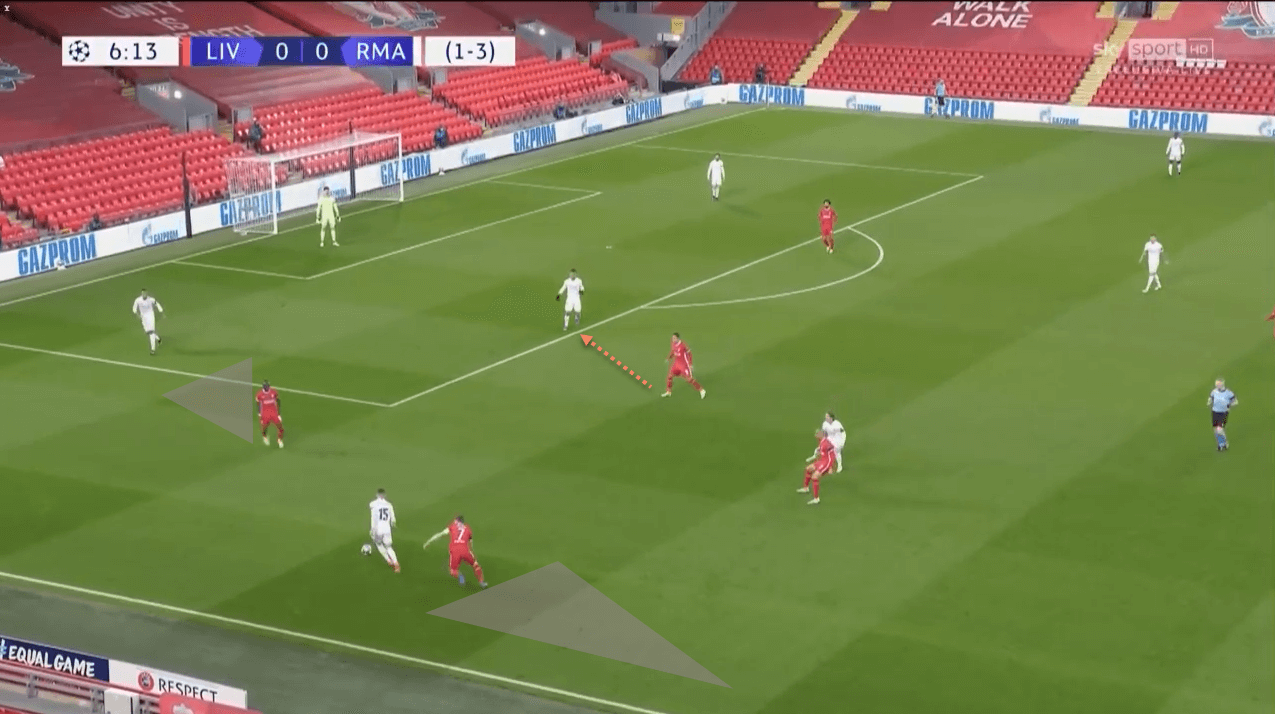
That is exactly what happens, and Milner has rushed out to the flank to press the Uruguayan, forcing him to turn back. Liverpool have closed off all of his passing options, while Milner is also preventing him from turning and passing down the line to Marco Asensio. The Liverpool captain is able to win a throw-in from this situation, and this shows how effective Liverpool can be at winning the ball back high up the pitch.
A couple of caveats here that will be relevant for Manchester United though. In the second scenario, Valverde receives the ball with a closed body position, which denies him the chance to pass to Asensio. This can be attributed to his unfamiliarity at playing in this position – United can expect Aaron Wan-Bissaka to do better in similar situations, although he can also be a little unreliable on the ball. Secondly, United’s shape in the build-up will be slightly different, as the next image shows.
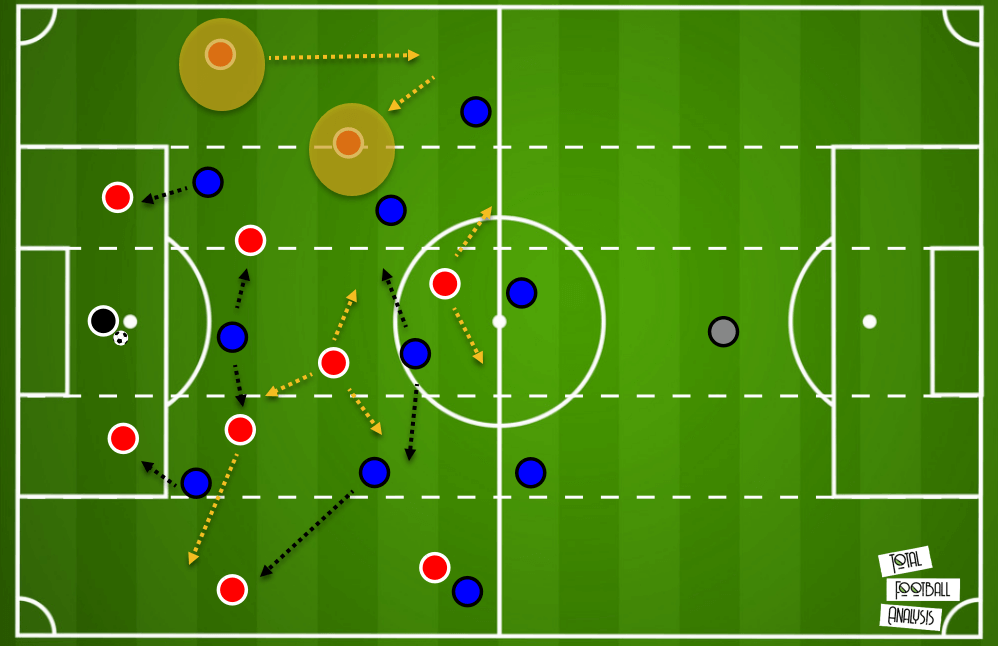
United broadly set up in a 2-4-3-1 from goal-kicks: the two centre-backs do split in a similar manner, but United’s double pivot drops to try and offer passing options, while the full-backs stay wide. The image shows how Liverpool (in blue) will probably try to press the United (red) players – Milner will be tasked with closing down Wan-Bissaka when he receives the ball, with Wijnaldum doing the same on the opposite side, while Salah and Mané press the centre-backs, and Firmino will attempt to close down whichever of the two United midfielders receives the ball. However, there are some ways for the home side to be able to play through and over this press to get forward quickly.
One way in which United can stretch the Liverpool press is by having McTominay drop into the right-back position during the build-up. This will force Firmino wider and open up passing lanes centrally, or, if the Brazilian stays central, it can help create a 2v1 out wide with Wan-Bissaka against Milner. With Marcus Rashford likely to be playing on the right, Andrew Robertson will not be able to venture forward too much, and this will give United the opportunity to progress the ball down the right.
The other option will be to take advantage of Pogba’s positioning. The Frenchman is obviously not a natural winger, and so he usually comes infield from his left-sided position to try and receive the ball in the left half-space. This will also pose a dilemma for Alexander-Arnold, as Luke Shaw will have a lot of space to move forward as a result of Pogba’s movement infield. Wijnaldum and Alexander-Arnold will need to be in constant communication, as Bruno Fernandes also tends to roam across the width of the pitch to receive possession behind opposition midfielders, and he could very well help create an overload on that side before releasing Shaw down the flank.
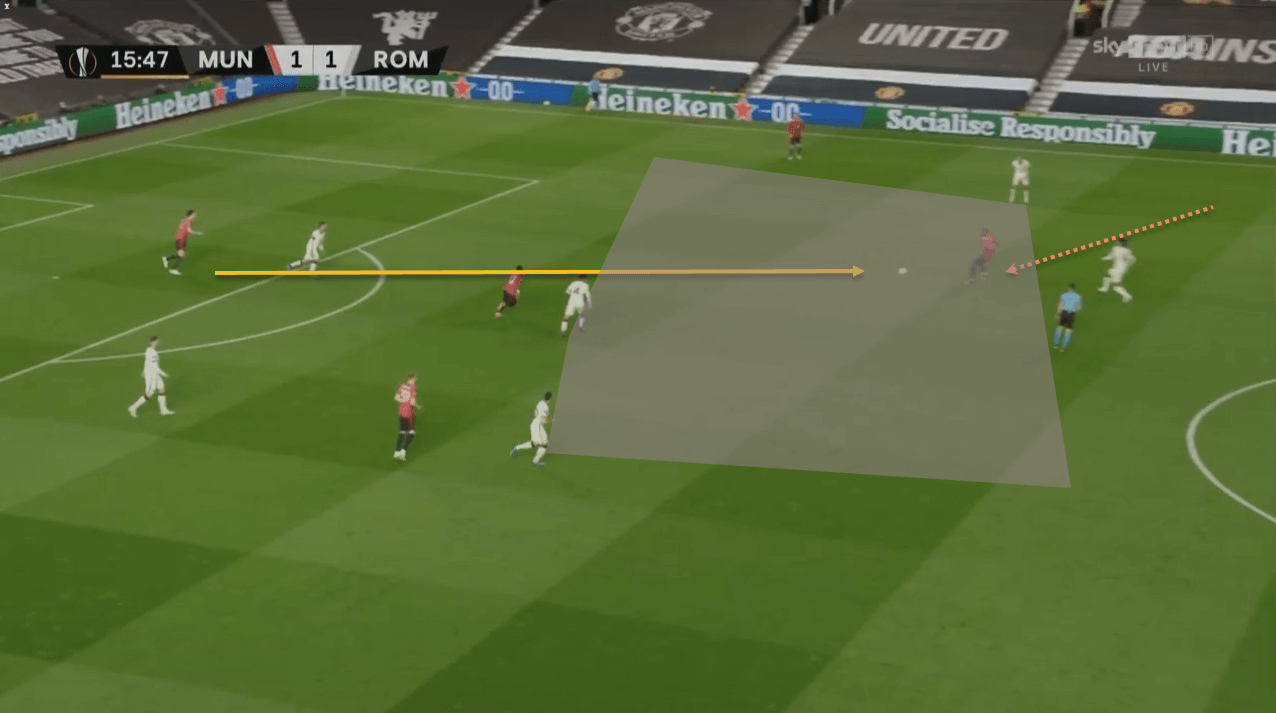
This is the sort of position where United will try to have Pogba receiving the ball during the build-up phase, with space to turn and run into infield, or pass to Shaw outside him.
Thus, while Liverpool remain an effective and dangerous pressing side, United can potentially play through and even over their press if they manage to position themselves intelligently during the build-up.
Pogba and Cavani come to the party
Pogba will also play a big part in United’s progression and attacking phases. As mentioned earlier, the 28-year-old has been playing quite well on the left wing in recent games, as he has been freed somewhat of the defensive responsibility that comes with playing in a midfield pivot. This position has also allowed him to drift infield into the half-spaces to combine with Fernandes and Shaw, and often sees him pick up possession in advanced and dangerous areas.
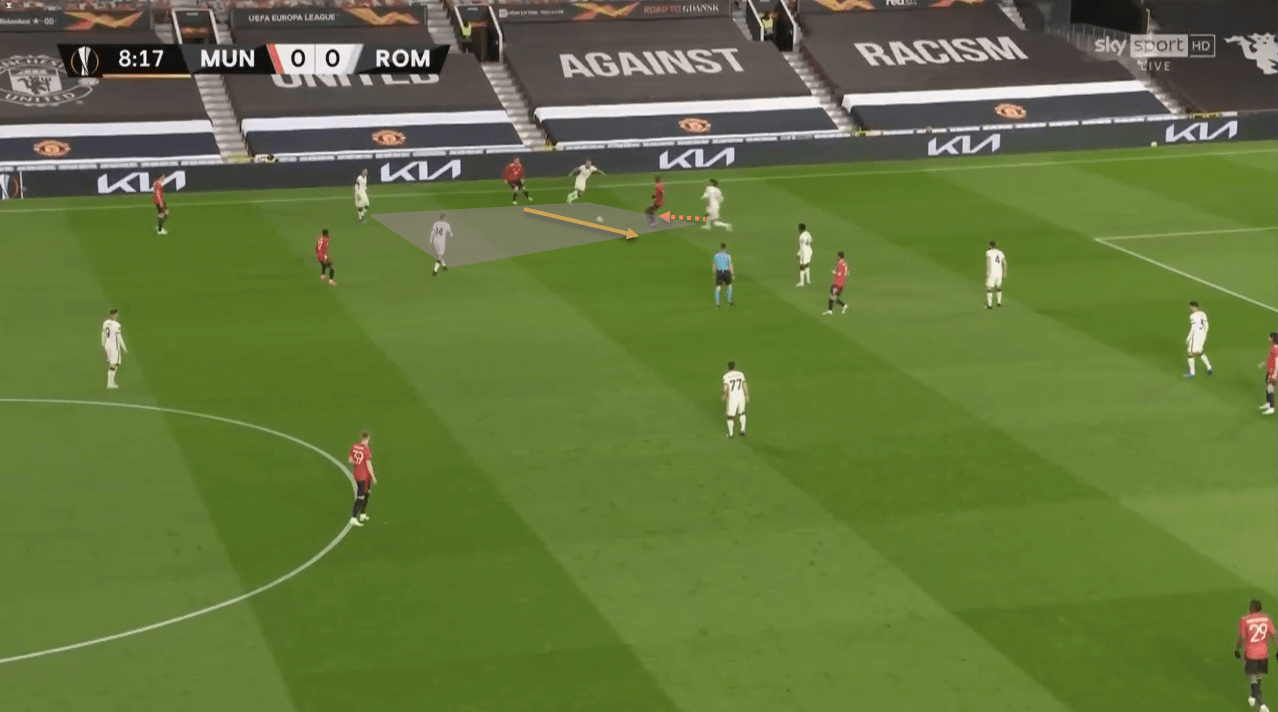
This is a great example from the game against Roma, immediately before United’s first goal. Pogba is able to receive the ball and turn infield, leaving Chris Smalling behind in the process.
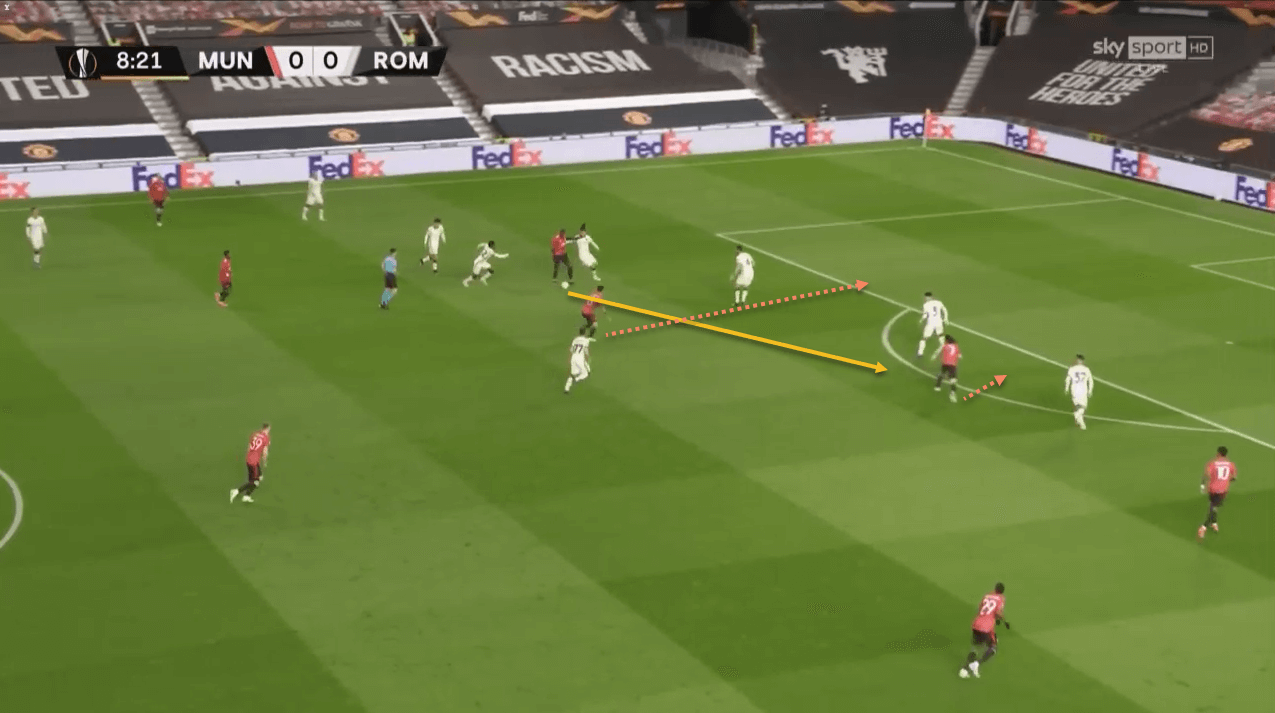
He is able to play a pass to Cavani, who is shaping to run into the box behind Roger Ibañez. Note how Fernandes also begins to make a third-man run into the box at this moment.
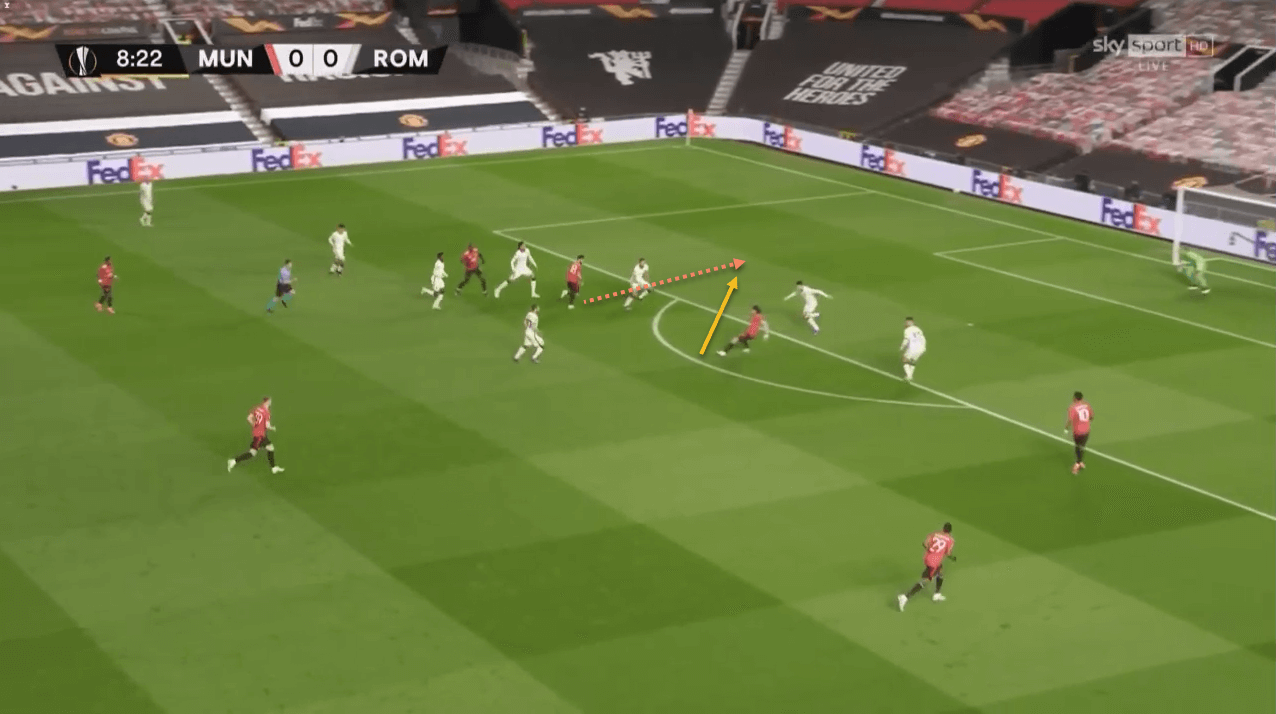
Cavani, however, stops his run and plays a first-time pass into the box for Fernandes. This movement has meant that Ibañez is caught in no man’s land, having been dropping deep in anticipation of Cavani’s run in behind, while Fernandes is able to get behind Bryan Cristante and score with a delicate chip into the goal.
This sequence of play is a good example of United’s primary attacking and creative threats combining to good effect, and we can expect more of the same against Liverpool as well. Pogba’s positioning will ask questions of Alexander-Arnold, and while United will not get as much space as they did against Roma, the concept of third-man runs, as seen here, will be vital to their chances of scoring in this match as well.
Cavani will be crucial in this regard. The Uruguayan has put on a masterclass in centre-forward play at times this season for United, and his movement, positioning and intelligence could make a big difference against Fabinho and Kabak. United’s number 7 has already shown a great level of understanding with both Pogba and Fernandes, and we can expect these three to cause Liverpool’s backline more than just a few headaches on Sunday.
The McFred problem
Fred and McTominay have become Solskjær’s go-to options in central midfield for the big games. This is partly down to the squad composition – Nemanja Matić does not have the legs to play against top-level opposition anymore, while we have just mentioned how Pogba is best utilised higher up the pitch with fewer defensive responsibilities. This leaves only this duo as the central midfield choice, and while they have been quite good in parts this season, there are some clear deficiencies to their play, both in and out of possession, which could create issues against Liverpool.
Both players are prone to getting tight to opposition players and therefore conceding space behind them. This would be fine if they were part of a three-man midfield, but as a double pivot, their first job is to stay deeper whenever possible to protect the space in front of their centre-backs. This example from the game against Leeds shows how McTominay’s determination to press aggressively high up the pitch…
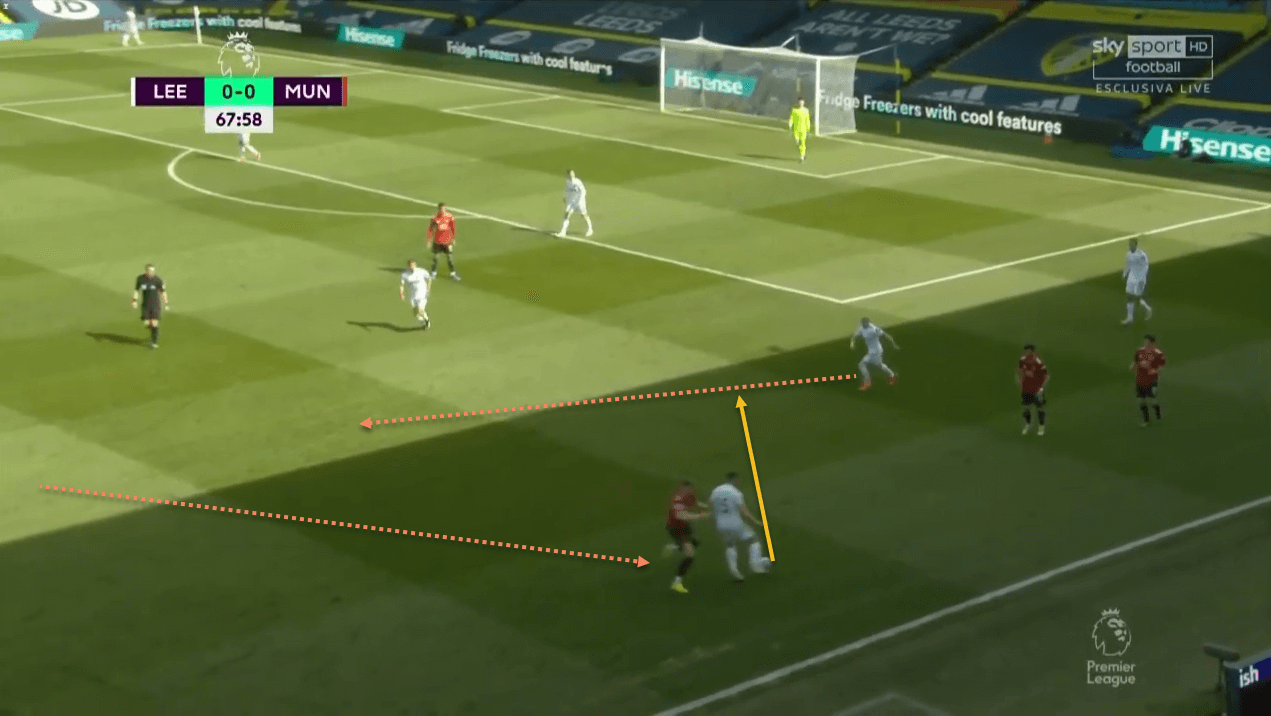
…leads to a Leeds counter-attack into vast amounts of space, for which Fred is forced to come across to cover, leaving another player free on the opposite side. The Brazilian managed to block the pass here, otherwise Leeds would have been away.
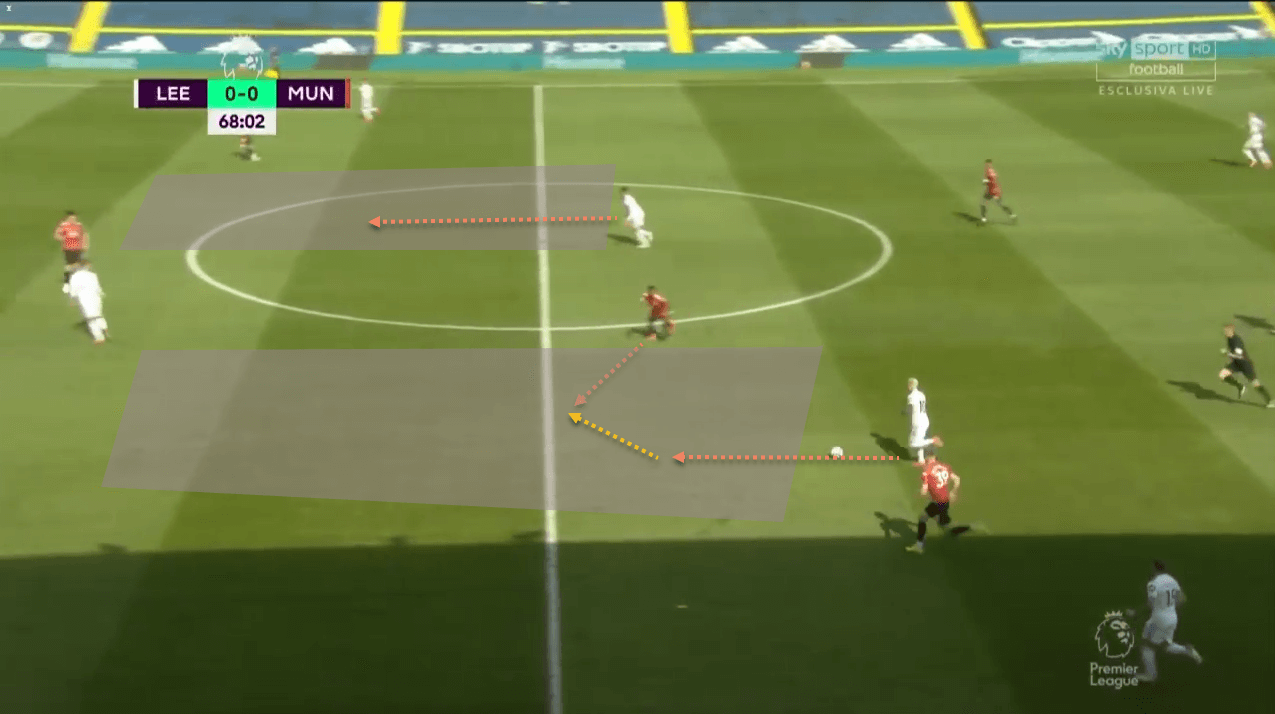
This could prove fatal against a team as devastating as Liverpool when given space to attack. Salah and Mané can punish United if spaces like this open up on the pitch, with Robertson and Alexander-Arnold also flying forward, and the Scot will need to curb his natural instincts and hold his position more often than not.
McTominay is also fairly limited in possession, rarely able to make forward penetrative passes, whether in deeper areas or higher up the pitch. This is not a problem in itself – the ability to retain possession is vital when playing in midfield, especially in a double pivot behind a player like Fernandes who constantly attempts risky passes and gives the ball away. However, the Scot is often unable to make even simple passes which would progress play, opting for the safe sideways or backwards pass, which does slow down United’s progression on occasion.
Here, the 24-year-old receives the ball from Wan-Bissaka, who immediately makes a forward run into space, while Fernandes is also calling for the ball while drifting to the right as well.
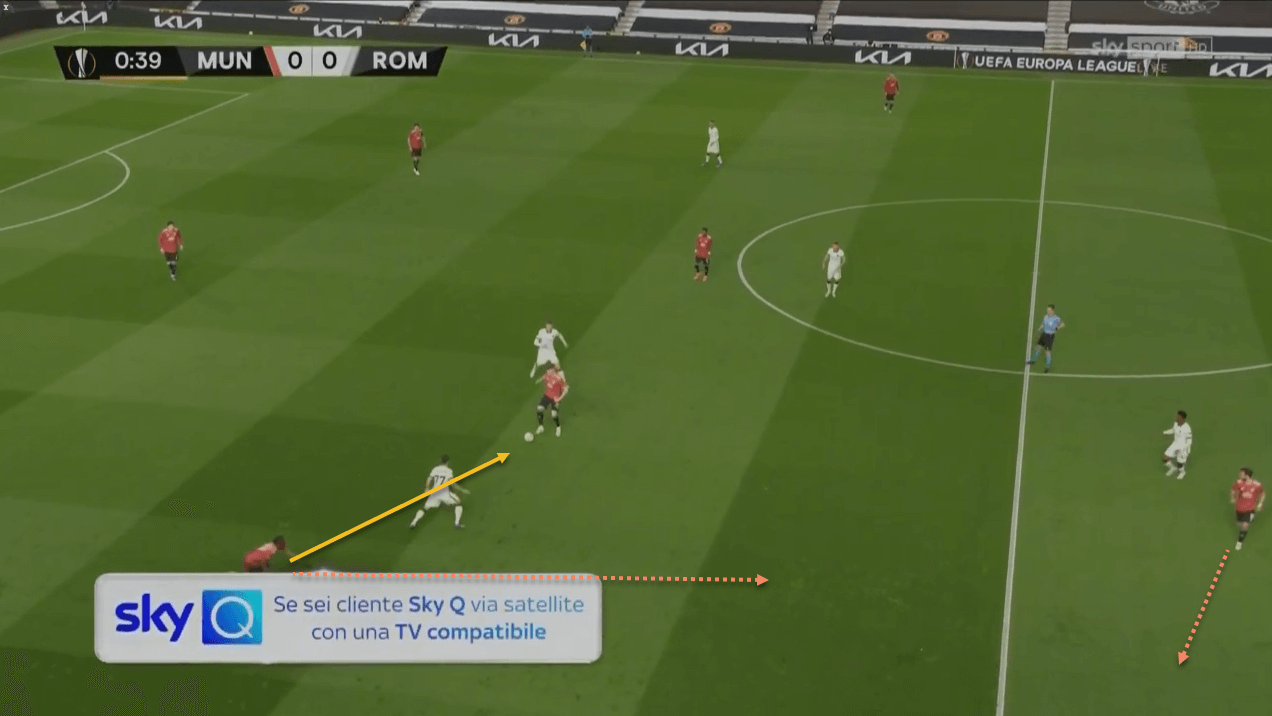
However, McTominay turns and plays the ball back, much to Fernandes’ annoyance.
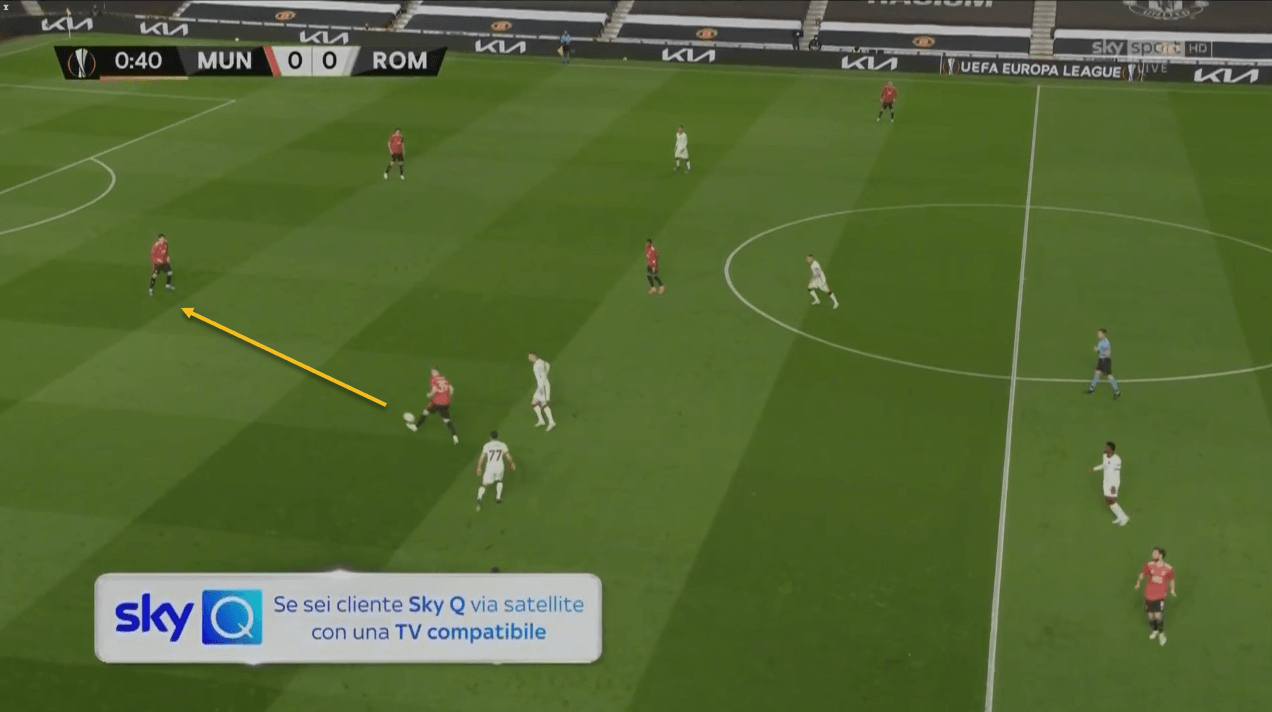
Fred has similar traits, while he is also prone to giving the ball away with simple passes. The next image shows just one of many such instances this season – the Brazilian spots Fernandes in space on the right flank, but his attempted first-time pass is yards ahead of his teammate and goes out for a throw-in.
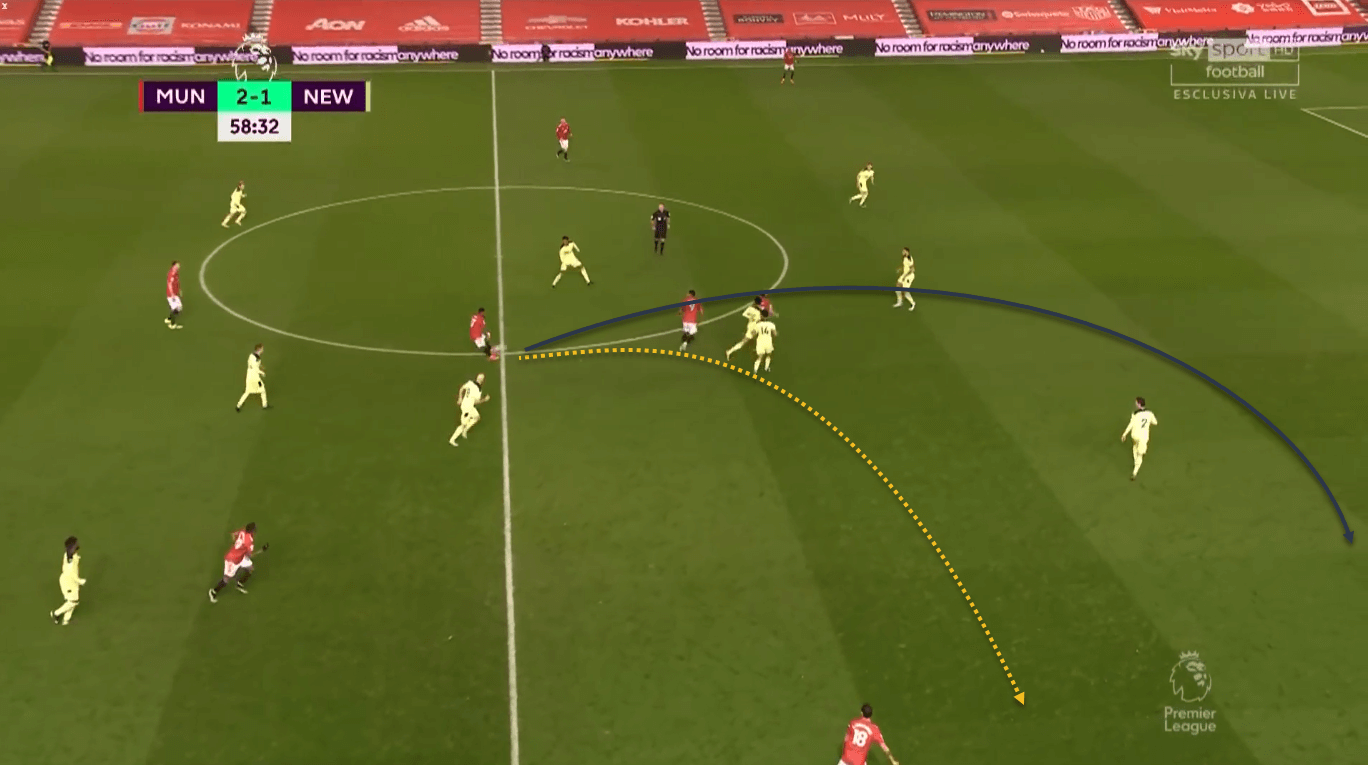
Fred’s tendency of giving the ball away from simple passes led to a costly concession against Leicester City in the FA Cup sixth round, where Fred received a pass from Harry Maguire just outside his box, but while under pressure from a Leicester player, sold Dean Henderson short with his attempted back pass, allowing Kelechi Iheanacho to convert.
Against a side who are as proficient at pressing as Liverpool, McTominay and Fred will need to be at the absolute top of their game to not give the ball away in dangerous areas, and give United a solid platform to build their attacks on.
Conclusion
This should be another fascinating encounter between these two heavyweights of English football, and while United have momentum and form on their side, Liverpool are still a very good side, and can cause a lot of problems for the home side. Liverpool’s press has the potential to be a thorn in United’s side, especially when Fred and McTominay are on the ball, while United will look to Pogba, Cavani and Fernandes to open up the away side. A win for United would deny City the title for another week, which should be added motivation, if this fixture ever needed it, while Liverpool will be desperate for the three points to keep up their challenge for a top-four spot.





Comments